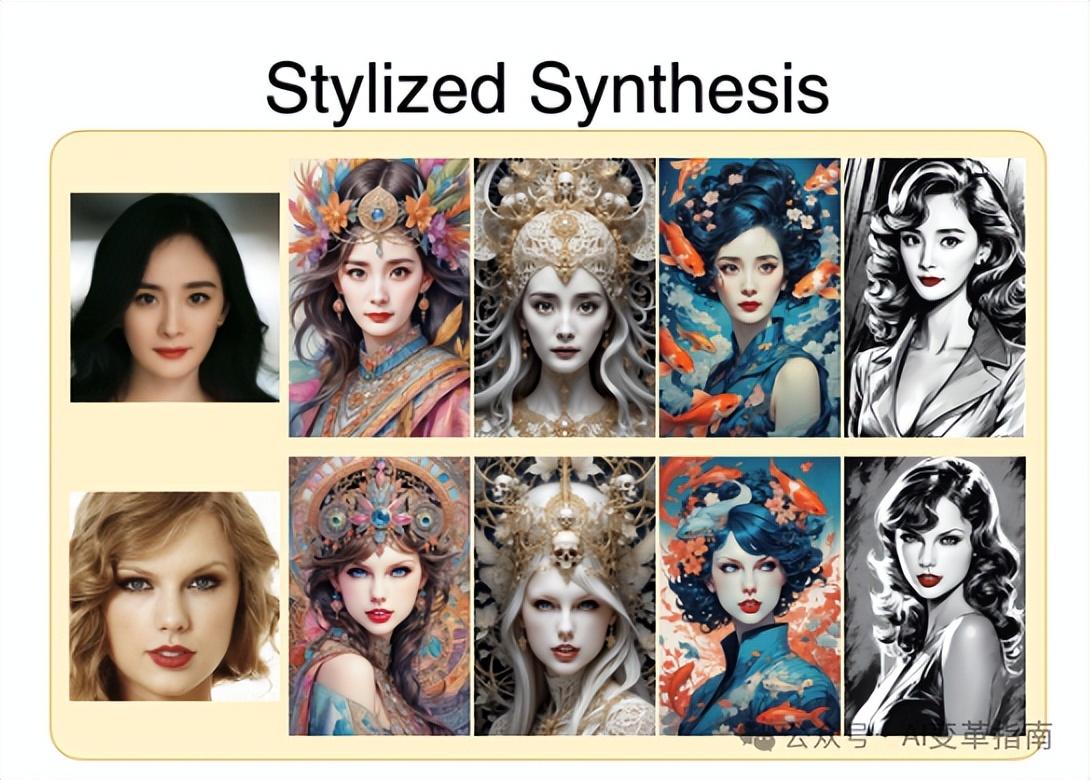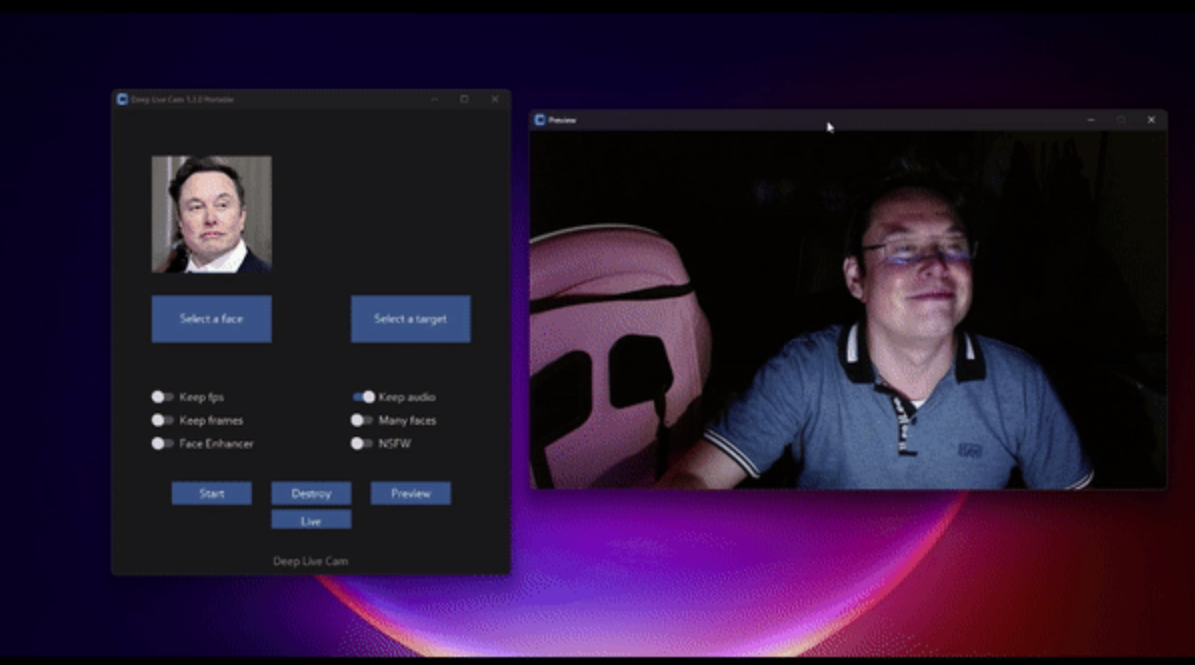您现在的位置是:网站首页> AI人工智能
优秀的开源项目
- AI人工智能
- 2025-12-25
- 3809人已阅读
优秀的开源项目

Coze Studio 是一站式 AI Agent 开发工具
喂饭教程!15分钟用Dify搭建基于智能体的聊天式数据查询应用
开源三国之 Gemma:Google 最强开源模型 Gemma 能打吗
TencentARC/PhotoMaker根据一组照片生成该人物其他照片
ChatTTS-ui将文字合成为语音,同时支持对外提供API接口
Pinokio:一键安装所有开源 AI 应用,编程小白的福音
IOPaint | 一个超级好用的万能AI工具,抠图,擦除,扩图,形状替换,环境感知等
FireRedTTS整合包,1021,官方模型更新,支持长文本
Llama-3.3-70B震撼登场!70b参数128k上下文性能接近gpt4
CapCutAPI轻量、灵活、易上手的剪映/CapCutAPI工具,构建全自动化视频剪辑/混剪流水线
easyVoice开源文本转语音工具,支持超长文本,多角色配音,点击在线体验
学习AI编程例子
haystack编排框架,用于构建可定制的、生产就绪的 LLM 应用程序
AI模型调用框架
Dify 一个开源 LLM 应用开发平台
Dify 是一个开源 LLM 应用开发平台。Dify 的直观界面结合了 AI 工作流、RAG 管道、代理功能、模型管理、可观察性功能等,让您可以快速从原型转向生产
喂饭教程!15分钟用Dify搭建基于智能体的聊天式数据查询应用
InstantID一张照片生成各种风格写真图
InstantID的效果非常惊艳,它能够在各种风格中生成高保真的个性化图像,例如卡通、油画、素描、动漫、游戏等。用户只需要输入一张面部图像和一段文本描述,就能得到满意的结果。

InstantID 的创新之处主要有三个方面:
人脸特征提取:InstantID 利用预训练的人脸编码器,比如 InsightFace 的 antelopev 模型,来提取强语义的人脸特征,以增强图像生成的语义准确性。这样,扩散模型就能更好地识别和保留人脸的细节,比如眼睛、鼻子、嘴巴等。
Cross-Attention 机制:InstantID 通过解耦的交叉注意力机制,将人脸特征作为 Image Prompt 嵌入,增强文本提示的效果,同时保持对生成图像的精细控制。这样,扩散模型就能更好地根据文本的要求,来调整图像的风格,比如颜色、光照、背景等。
IdentityNet:InstantID 引入 IdentityNet 对人脸图像进行编码,通过强语义和弱空间的条件控制,进一步提升 ID 的保真度。IdentityNet 是一个可插拔的模块,它可以和任何预训练的文本到图像扩散模型兼容,而无需重新训练。
项目地址:
代码地址:
https://github.com/InstantID/InstantID
体验地址:
https://huggingface.co/spaces/InstantX/InstantID
特别注意要写实的照片,将风格设置为无风格
开源三国之 Gemma:Google 最强开源模型 Gemma 能打吗
Fay开源数字人框架
supervision为你书写可重用的计算机视觉工具
样例代码
import cv2
import supervision as sv
from ultralytics import YOLO
image = cv2.imread(...)
model = YOLO('yolov8s.pt')
result = model(image)[0]
detections = sv.Detections.from_ultralytics(result)
len(detections)
import supervision as sv
dataset = sv.DetectionDataset.from_yolo(
images_directory_path=...,
annotations_directory_path=...,
data_yaml_path=...
)
dataset.classes
['dog', 'person']
len(dataset)
suno-ai/bark文本转语音支持多种语言
基本使用
from bark import SAMPLE_RATE, generate_audio, preload_models
from scipy.io.wavfile import write as write_wav
from IPython.display import Audio
# download and load all models
preload_models()
# generate audio from text
text_prompt = """
Hello, my name is Suno. And, uh — and I like pizza. [laughs]
But I also have other interests such as playing tic tac toe.
"""
audio_array = generate_audio(text_prompt, history_prompt="v2/en_speaker_1")
# save audio to disk
write_wav("bark_generation.wav", SAMPLE_RATE, audio_array)
# play text in notebook
Audio(audio_array, rate=SAMPLE_RATE)
命令行方式
python -m bark --text "Hello, my name is Suno." --output_filename "example.wav"
安装:
pip install git+https://github.com/suno-ai/bark.git
or
git clone https://github.com/suno-ai/bark
cd bark && pip install .
通过Transformers使用
pip install git+https://github.com/huggingface/transformers.git
from transformers import AutoProcessor, BarkModel
from IPython.display import Audio
import scipy
processor = AutoProcessor.from_pretrained("suno/bark")
model = BarkModel.from_pretrained("suno/bark")
voice_preset = "v2/en_speaker_6"
inputs = processor("Hello, my dog is cute", voice_preset=voice_preset)
audio_array = model.generate(**inputs)
audio_array = audio_array.cpu().numpy().squeeze()
#播放
sample_rate = model.generation_config.sample_rate
Audio(audio_array, rate=sample_rate)
#生成文件
sample_rate = model.generation_config.sample_rate
scipy.io.wavfile.write("bark_out.wav", rate=sample_rate, data=audio_array)
coqui/xtts最强的克隆声音tts
if you are only interested in synthesizing speech with the released 🐸TTS models, installing from PyPI is the easiest option.
pip install TTS
If you plan to code or train models, clone 🐸TTS and install it locally.
git clone https://github.com/coqui-ai/TTS
pip install -e .[all,dev,notebooks] # Select the relevant extras
Running a multi-speaker and multi-lingual model
import torch
from TTS.api import TTS
# Get device
device = "cuda" if torch.cuda.is_available() else "cpu"
# List available 🐸TTS models
print(TTS().list_models())
# Init TTS
tts = TTS("tts_models/multilingual/multi-dataset/xtts_v2").to(device)
# Run TTS
# ❗ Since this model is multi-lingual voice cloning model, we must set the target speaker_wav and language
# Text to speech list of amplitude values as output
wav = tts.tts(text="Hello world!", speaker_wav="my/cloning/audio.wav", language="en")
# Text to speech to a file
tts.tts_to_file(text="Hello world!", speaker_wav="my/cloning/audio.wav", language="en", file_path="output.wav")
Running a single speaker model
# Init TTS with the target model name
tts = TTS(model_name="tts_models/de/thorsten/tacotron2-DDC", progress_bar=False).to(device)
# Run TTS
tts.tts_to_file(text="Ich bin eine Testnachricht.", file_path=OUTPUT_PATH)
# Example voice cloning with YourTTS in English, French and Portuguese
tts = TTS(model_name="tts_models/multilingual/multi-dataset/your_tts", progress_bar=False).to(device)
tts.tts_to_file("This is voice cloning.", speaker_wav="my/cloning/audio.wav", language="en", file_path="output.wav")
tts.tts_to_file("C'est le clonage de la voix.", speaker_wav="my/cloning/audio.wav", language="fr-fr", file_path="output.wav")
tts.tts_to_file("Isso é clonagem de voz.", speaker_wav="my/cloning/audio.wav", language="pt-br", file_path="output.wav")
Converting the voice in source_wav to the voice of target_wav
tts = TTS(model_name="voice_conversion_models/multilingual/vctk/freevc24", progress_bar=False).to("cuda")
tts.voice_conversion_to_file(source_wav="my/source.wav", target_wav="my/target.wav", file_path="output.wav")
you can clone voices by using any model in 🐸TTS.
tts = TTS("tts_models/de/thorsten/tacotron2-DDC")
tts.tts_with_vc_to_file(
"Wie sage ich auf Italienisch, dass ich dich liebe?",
speaker_wav="target/speaker.wav",
file_path="output.wav"
)
text to speech using Fairseq models in ~1100 languages
# TTS with on the fly voice conversion
api = TTS("tts_models/deu/fairseq/vits")
api.tts_with_vc_to_file(
"Wie sage ich auf Italienisch, dass ich dich liebe?",
speaker_wav="target/speaker.wav",
file_path="output.wav"
)
Command-line tts
List provided models:
$ tts --list_models
Query by type/name: The model_info_by_name uses the name as it from the --list_models.
$ tts --model_info_by_name "<model_type>/<language>/<dataset>/<model_name>"
For example:
$ tts --model_info_by_name tts_models/tr/common-voice/glow-tts
$ tts --model_info_by_name vocoder_models/en/ljspeech/hifigan_v2
Query by type/idx: The model_query_idx uses the corresponding idx from --list_models.
$ tts --model_info_by_idx "<model_type>/<model_query_idx>"
For example:
$ tts --model_info_by_idx tts_models/3
Query info for model info by full name:
$ tts --model_info_by_name "<model_type>/<language>/<dataset>/<model_name>"
Run TTS with default models:
$ tts --text "Text for TTS" --out_path output/path/speech.wav
Run TTS and pipe out the generated TTS wav file data:
$ tts --text "Text for TTS" --pipe_out --out_path output/path/speech.wav | aplay
Run a TTS model with its default vocoder model:
$ tts --text "Text for TTS" --model_name "<model_type>/<language>/<dataset>/<model_name>" --out_path output/path/speech.wav
For example:
$ tts --text "Text for TTS" --model_name "tts_models/en/ljspeech/glow-tts" --out_path output/path/speech.wav
Run with specific TTS and vocoder models from the list:
$ tts --text "Text for TTS" --model_name "<model_type>/<language>/<dataset>/<model_name>" --vocoder_name "<model_type>/<language>/<dataset>/<model_name>" --out_path output/path/speech.wav
For example:
$ tts --text "Text for TTS" --model_name "tts_models/en/ljspeech/glow-tts" --vocoder_name "vocoder_models/en/ljspeech/univnet" --out_path output/path/speech.wav
Run your own TTS model (Using Griffin-Lim Vocoder):
$ tts --text "Text for TTS" --model_path path/to/model.pth --config_path path/to/config.json --out_path output/path/speech.wav
Run your own TTS and Vocoder models:
$ tts --text "Text for TTS" --model_path path/to/model.pth --config_path path/to/config.json --out_path output/path/speech.wav
--vocoder_path path/to/vocoder.pth --vocoder_config_path path/to/vocoder_config.json
Multi-speaker Models
List the available speakers and choose a <speaker_id> among them:
$ tts --model_name "<language>/<dataset>/<model_name>" --list_speaker_idxs
Run the multi-speaker TTS model with the target speaker ID:
$ tts --text "Text for TTS." --out_path output/path/speech.wav --model_name "<language>/<dataset>/<model_name>" --speaker_idx <speaker_id>
Run your own multi-speaker TTS model:
$ tts --text "Text for TTS" --out_path output/path/speech.wav --model_path path/to/model.pth --config_path path/to/config.json --speakers_file_path path/to/speaker.json --speaker_idx <speaker_id>
Voice Conversion Models
$ tts --out_path output/path/speech.wav --model_name "<language>/<dataset>/<model_name>" --source_wav <path/to/speaker/wav> --target_wav <path/to/reference/wav>
TencentARC/PhotoMaker根据一组照片生成该人物其他照片
FishAudio接近人声的tts
GitHub :https://github.com/fishaudio/fish-speech
在线体验:https://fish.audio/zh-CN/
Omost简单提示词扩展成详细且精准的Prompt
ChatTTS-ui将文字合成为语音,同时支持对外提供API接口
一个简单的本地网页界面,使用ChatTTS将文字合成为语音,同时支持对外提供API接口
LivePortrait快手最新脸部视频AI模型
1. 克隆代码并准备环境
git clone https://github.com/KwaiVGI/LivePortrait
cd LivePortrait
# create env using conda
conda create -n LivePortrait python==3.9
conda activate LivePortrait
# install dependencies with pip (for Linux and Windows)
pip install -r requirements.txt
# for macOS with Apple Silicon
pip install -r requirements_macOS.txt
注意:确保您的系统已安装FFmpeg,包括ffmpeg和ffprobe!
2. 下载预训练权重
下载预训练权重的最简单方法是从 HuggingFace 下载:
# first, ensure git-lfs is installed, see: https://docs.github.com/en/repositories/working-with-files/managing-large-files/installing-git-large-file-storage
git lfs install
# clone and move the weights
git clone https://huggingface.co/KwaiVGI/LivePortrait temp_pretrained_weights
mv temp_pretrained_weights/* pretrained_weights/
rm -rf temp_pretrained_weights
或者,你可以从Google Drive或百度云下载所有预训练权重。解压并将它们放在 中./pretrained_weights。
确保目录结构如下,或包含:
pretrained_weights
├── insightface
│ └── models
│ └── buffalo_l
│ ├── 2d106det.onnx
│ └── det_10g.onnx
└── liveportrait
├── base_models
│ ├── appearance_feature_extractor.pth
│ ├── motion_extractor.pth
│ ├── spade_generator.pth
│ └── warping_module.pth
├── landmark.onnx
└── retargeting_models
└── stitching_retargeting_module.pth
3.推理
快速动手
# For Linux and Windows
python inference.py
# For macOS with Apple Silicon, Intel not supported, this maybe 20x slower than RTX 4090
PYTORCH_ENABLE_MPS_FALLBACK=1 python inference.py
如果脚本成功运行,你会得到一个名为 的输出mp4文件animations/s6--d0_concat.mp4。此文件包含以下结果:驾驶视频,输入图像和生成的结果。
图像
-s或者,您可以通过指定和参数来更改输入-d:
python inference.py -s assets/examples/source/s9.jpg -d assets/examples/driving/d0.mp4
# disable pasting back to run faster
python inference.py -s assets/examples/source/s9.jpg -d assets/examples/driving/d0.mp4 --no_flag_pasteback
# more options to see
python inference.py -h
驾驶视频自动裁剪
📕 要使用您自己的驾驶视频,我们建议:
将其裁剪为1:1 的宽高比(例如 512x512 或 256x256 像素),或通过 启用自动裁剪--flag_crop_driving_video。
重点关注头部区域,与示例视频类似。
尽量减少肩部运动。
确保驾驶视频的第一帧是正面且表情中性。
以下是自动裁剪的案例--flag_crop_driving_video:
python inference.py -s assets/examples/source/s9.jpg -d assets/examples/driving/d13.mp4 --flag_crop_driving_video
如果觉得自动裁剪的效果不好,您可以修改--scale_crop_video、--vy_ratio_crop_video选项来调整比例和偏移量,或者手动进行调整。
动作模板制作
您还可以使用自动生成的以 结尾的运动模板文件来.pkl加速推理,并保护隐私,例如:
python inference.py -s assets/examples/source/s9.jpg -d assets/examples/driving/d5.pkl
在我们的主页上发现更多有趣的结果😊
4. Gradio 界面
我们还提供了 Gradio界面以获得更好的体验,只需运行即可:
# For Linux and Windows:
python app.py
# For macOS with Apple Silicon, Intel not supported, this maybe 20x slower than RTX 4090
PYTORCH_ENABLE_MPS_FALLBACK=1 python app.py
您可以指定--server_port、、--share参数--server_name来满足您的需求!
🚀 我们还提供了加速选项--flag_do_torch_compile。首次推理会触发优化过程(约一分钟),使后续推理速度提高 20-30%。性能提升可能因 CUDA 版本的不同而有所差异。
# enable torch.compile for faster inference
python app.py --flag_do_torch_compile
Unique3D从单个图像生成高质量、高效的 3D 网格
EchoMimic数字人
EchoMimic整合包:https://pan.quark.cn/s/9bba5f7f7167
DiffMorpher:一键生成两张图片平滑变形视频
开源地址:https://github.com/Kevin-thu/DiffMorpher
一键启动包:https://aiyy.info/diffmorpher/
Pinokio:一键安装所有开源 AI 应用,编程小白的福音
Pinokio整合了几乎所有市面上开源的 AI 工具,不管是大语言模型、AI 绘画、AI语音、AI 视频,还是AI 音乐等其他相关的AI工具,全部都可以在这里找到。
而这款工具,它最大的亮点就是这些 AI 应用都可以傻瓜式地一键安装。这也是为什么我说Pinokio是编程小白的福音,无需懂编程,无需会代码,只要会电脑就行。
哪怕对于编程大佬也是可以入手的一款工具,以前我们在本地部署开源AI工具,我们需要按步骤一步步克隆项目、安装/解决依赖、运行调试,特别繁琐,如今只需要一键安装即可。
AI应用一键安装
说实话,作为一个程序员,我在第一次听到“一键安装”这个概念时,真的是抱着怀疑的态度。
毕竟,以前安装 Stable Diffusion、ComfyUI、TTS 等AI应用时,我可是吃尽了苦头。各种环境配置、命令行操作,还有那无穷无尽的报错信息,简直让人头疼。但 Pinokio 彻底改变了我的看法。
记得第一次尝试安装 Stable Diffusion Web UI 时,即便按照官方文档一步步操作,依旧避免不了各种莫名其妙的错误。毕竟我是在Mac上用的,不像Windows有秋叶大佬那样的大神给封装好启动器,一键就可运行。
那段时间,我真的想把电脑砸了。安装好了也还时不时出些小毛病!
Pinokio支持全平台(除了移动端):Windows、Mac、Linux
下载可直接前往GitHub项目下,如网络条件差的朋友,小编也在文末提供下载好的资源!
如何安装Pinokio
官网:https://pinokio.computer/
GitHub:https://github.com/pinokiocomputer/pinokio
安装途径一:官网直接下载
点击“Download”
安装途径二:GitHub Release页面下载
安装包下载到本地后,就可以双击进行安装了(我是在Mac电脑上进行的)
Tips:如果Mac上安装完成后,打开Pinokio时提示“文件已损坏,您应该将它移到废纸篓”,请执行以下命令即可解决: xattr -rd com.apple.quarantine /Applications/Pinokio.app
Pinokio界面功能介绍
首次进行Pinokio会显示如下设置界面,需要设置Pinokio的Home目录,也就是之后安装AI工具时存储的主目录,所有安装的AI工具都会在此目录下,然后设置Pinokio的主题(暗黑和亮白)按照自己习惯就行。
保存后会进入到Pinokio应用主界面,然后点击“Visit Discover Page”
这样就进入到一个类似于应用市场的界面,可以安装脚本库中有的开源AI工具。
“Community Script”顾名思义为社区脚本工具,指的是pinokio内需的脚本工具
“Download from URL”自定义开源AI工具安装,只要是GitHub上有的,其实都可以复制github链接进行一键式安装。
Pinokio 一键式安装AI应用
接下来就拿 IDM-VTON 这个开源换装项目,做一个演示说明。直接点击Download下载。
会出现如下环境依赖安装界面,比如:Python虚拟环境管理应用conda、git拉取代码、zip解压用的等等。(有一点觉得不好,不支持自定义软件路径,像conda/git/zip/py/brew其实会编程的基本上自己电脑都会安装过,无需再安装新的)
我们直接点击Install安装,等待下载完成
直到7个安装依赖都安装完成后,提示Install Complete!说明所有依赖安装完成!
此时会弹出一个弹窗,让你继续安装AI应用,在我这里也就是安装IDM-VTON项目
由于是测试给大家看的,安装时间比较久,所以结果就不在这里展示了,如果想安装其他项目的小伙伴照此流程即可。
安装完成后的项目会在主界面显示,直接Star启动项目就行了。
还有一个功能,Pinokio可以开启一个本地HTTP服务,就跟客户端界面一样,在浏览器上一样可以执行所有的操作。
所以,测验用了下 Pinokio,安装AI工具简直就像喝水一样简单。一键安装,自动搞定所有配置。
(但是还是可能因为网络原因,安装失败!再就是安装的项目对显卡有特别的最低要求,所以请根据电脑配置选择是否安装相应的AI应用)
相信编程小白,使用后的那种感觉,就像是解锁了新技能,会特别有成就感
FLUX.1 模型的官方推理库
https://huggingface.co/spaces/ChristianHappy/FLUX.1-schnell
https://replicate.com/collections/flux
https://replicate.com/black-forest-labs/flux-pro
https://replicate.com/black-forest-labs/flux-dev
https://replicate.com/black-forest-labs/flux-schnell
FLUX生成图片格式技巧
问AI获得相机生成图片格式
世界上做好的相机是啥
相机拍摄的图像的格式是啥
最后提示词变为
相机特有格式文件
如 L1000001.DNG:提示词
Deep-Live-Cam实时换脸只需要一张图片

C#开源可离线运行的AI生产力工具,保护数据隐私,功能强大
开源地址:https://github.com/rnchg/Apt
IOPaint | 一个超级好用的万能AI工具,抠图,擦除,扩图,形状替换,环境感知等
一键包下载
夸克:https://pan.quark.cn/s/132bcc341ad4 提取码:xjag
mega:https://mega.nz/folder/Qu0zETKT#yxsnmmLtJfkWUNrk8KFq7Q
FireRedTTS整合包,1021,官方模型更新,支持长文本
Clone and install
Clone the repo
https://github.com/FireRedTeam/FireRedTTS.git
cd FireRedTTS
Create conda env
# step1.create env
conda create --name redtts python=3.10
# stpe2.install torch (pytorch should match the cuda-version on your machine)
# CUDA 11.8
conda install pytorch==2.3.1 torchvision==0.18.1 torchaudio==2.3.1 pytorch-cuda=11.8 -c pytorch -c nvidia
# CUDA 12.1
conda install pytorch==2.3.1 torchvision==0.18.1 torchaudio==2.3.1 pytorch-cuda=12.1 -c pytorch -c nvidia
# step3.install fireredtts form source
Download models
Download the required model files from Model_Lists and place them in the folder pretrained_models
Basic Usage
import os
import torchaudio
from fireredtts.fireredtts import FireRedTTS
tts = FireRedTTS(
config_path="configs/config_24k.json",
pretrained_path=<pretrained_models_dir>,
)
#same language
rec_wavs = tts.synthesize(
prompt_wav="examples/prompt_1.wav",
text="小红书,是中国大陆的网络购物和社交平台,成立于二零一三年六月。",
,
)
rec_wavs = rec_wavs.detach().cpu()
out_wav_path = os.path.join("./example.wav")
torchaudio.save(out_wav_path, rec_wavs, 24000)
VideoChat实时语音交互数字人
实时语音交互数字人,支持端到端语音方案(GLM-4-Voice - THG)和级联方案(ASR-LLM-TTS-THG)。可自定义形象与音色,支持音色克隆,首包延迟低至3s。
在线demo:https://www.modelscope.cn/studios/AI-ModelScope/video_chat
TODO:
TTS模块添加音色克隆功能
TTS模块添加edge-tts
LLM模块添加qwen本地推理
支持GLM-4-Voice,提供ASR-LLM-TTS-THG和MLLM-THG两种生成方式
GLM-4-Voice集成vllm推理加速
集成gradio-webrtc(需等待支持音视频同步),提高视频流稳定性
Llama-3.3-70B震撼登场!70b参数128k上下文性能接近gpt4
QVQ-72B开源的图像转文字的开源模型
CapCutAPI轻量、灵活、易上手的剪映/CapCutAPI工具,构建全自动化视频剪辑/混剪流水线
项目功能
本项目是一个基于Python的剪映/CapCut处理工具,提供以下核心功能:
核心功能
草稿文件管理:创建、读取、修改和保存剪映/CapCut草稿文件
素材处理:支持视频、音频、图片、文本、贴纸等多种素材的添加和编辑
特效应用:支持添加转场、滤镜、蒙版、动画等多种特效
API服务:提供HTTP API接口,支持远程调用和自动化处理
AI集成:集成多种AI服务,支持智能生成字幕、文本和图像
主要API接口
/create_draft创建草稿
/add_video:添加视频素材到草稿
/add_audio:添加音频素材到草稿
/add_image:添加图片素材到草稿
/add_text:添加文本素材到草稿
/add_subtitle:添加字幕到草稿
/add_effect:添加特效到素材
/add_sticker:添加贴纸到草稿
/save_draft:保存草稿文件
配置说明
配置文件
项目支持通过配置文件进行自定义设置。要使用配置文件:
复制config.json.example为config.json
根据需要修改配置项
cp config.json.example config.json
环境配置
ffmpeg
本项目依赖于ffmpeg,您需要确保系统中已安装ffmpeg,并且将其添加到系统的环境变量中。
Python 环境
本项目需要 Python 3.8.20 版本,请确保您的系统已安装正确版本的 Python。
安装依赖
安装项目所需的依赖包:
pip install -r requirements.txt
运行服务器
完成配置和环境设置后,执行以下命令启动服务器:
python capcut_server.py
服务器启动后,您可以通过 API 接口访问相关功能。
使用示例
添加视频
import requests
response = requests.post("http://localhost:9001/add_video", json={
"video_url": "http://example.com/video.mp4",
"start": 0,
"end": 10,
"width": 1080,
"height": 1920
})
print(response.json())
添加文本
import requests
response = requests.post("http://localhost:9001/add_text", json={
"text": "你好,世界!",
"start": 0,
"end": 3,
"font": "思源黑体",
"font_color": "#FF0000",
"font_size": 30.0
})
print(response.json())
保存草稿
import requests
response = requests.post("http://localhost:9001/save_draft", json={
"draft_id": "123456",
"draft_folder":"your capcut draft folder"
})
print(response.json())
也可以用 REST Client 的 rest_client_test.http 进行http测试,只需要安装对应的IDE插件
复制草稿到剪映/capcut草稿路径
调用save_draft会在服务器当前目录下生成一个dfd_开头的文件夹,将他复制到剪映/CapCut草稿目录,即可看到生成的草稿
更多示例
请参考项目的example.py文件,其中包含了更多的使用示例,如添加音频、添加特效等。
项目特点
跨平台支持:同时支持剪映和CapCut国际版
自动化处理:支持批量处理和自动化工作流
丰富的API:提供全面的API接口,方便集成到其他系统
灵活的配置:通过配置文件实现灵活的功能定制
AI增强:集成多种AI服务,提升视频制作效率
开源合集
生成视频
https://github.com/jy0205/Pyramid-Flow
生成绘制过程
https://github.com/lllyasviel/Paints-UNDO
awesome-llm-apps AI 落地案例
使用 RAG、AI 代理、多代理团队、MCP、语音代理等构建的精选 LLM 应用程序的精选集合。该存储库包含使用 OpenAI、Anthropic、Google 模型的 LLM 应用程序,以及可以在计算机上本地运行的 DeepSeek、Qwen 或 Llama 等开源模型。
haystack编排框架,用于构建可定制的、生产就绪的 LLM 应用程序
AI 编排框架,用于构建可定制的、生产就绪的 LLM 应用程序。将组件(模型、矢量数据库、文件转换器)连接到可以与数据交互的管道或代理。凭借先进的检索方法,它最适合构建 RAG、问答、语义搜索或对话代理聊天机器人。
InfiniteTalk无限长度的谈话视频生成
我们提出了 InfiniteTalk,一种新颖的稀疏帧视频配音框架。给定输入视频和音轨,InfiniteTalk 会合成具有准确唇部同步的新视频,同时将头部运动、身体姿势和面部表情与音频保持一致。与仅关注嘴唇的传统配音方法不同,InfiniteTalk 可以生成无限长度的视频,具有准确的口型同步和一致的身份保留。此外,InfiniteTalk 还可以用作图像音频到视频模型,以图像和音频作为输入。
AICG - AI驱动的智能视频创作平台
AI长视频生成,高质量解说流,有声书,自动发布B站。
快速开始
📋 前置要求
工具 版本要求 说明
Node.js >= 18.0.0 前端运行环境
Python >= 3.11 后端运行环境
uv 最新版 Python包管理器
FFmpeg 最新版 视频处理核心
Docker 最新版 基础设施服务
🔑 API平台注册
本项目依赖第三方AI模型,需要注册以下平台:
[推荐] 硅基流动 (TTS/大模型)
注册链接:https://cloud.siliconflow.cn/i/63zI7Mdc
用途:高质量中文TTS、大模型服务
[低成本] 第三方中转平台 (Sora_Image)
注册链接:https://api.vectorengine.ai/register?aff=YVx7
用途:低成本图片生成(约0.04元/张)
📦 快速安装
# 1. 克隆项目
git clone https://github.com/869413421/aicon2.git
cd aicon2
# 2. 配置环境变量
cp .env.example .env
# 编辑.env文件,填入必要配置
# 3. 启动基础设施(PostgreSQL, Redis, MinIO)
docker-compose up -d
# 4. 启动后端
cd backend
uv sync
alembic upgrade head
uv run uvicorn src.main:app --reload --host 0.0.0.0 --port 8000
# 5. 启动Celery Worker(新终端)
cd backend
uv run celery -A src.tasks.task worker --loglevel=info
# 6. 启动前端(新终端)
cd frontend
npm install
npm run dev
✅ 验证安装
访问以下地址确认服务正常:
🌐 前端应用: http://localhost:3000
📚 API文档: http://localhost:8000/docs
📦 MinIO控制台: http://localhost:9001 (minioadmin/minioadmin123)
成本优化建议
推荐配置(极致性价比)
步骤 推荐服务 成本
提示词生成 GPT-4o-mini / DeepSeek ~¥0.001/句
图片生成 Sora_Image(中转平台) ~¥0.04/张
语音合成 硅基流动 index-tts2 ~¥0.02/句
示例成本计算(100句视频):
提示词:100 × ¥0.001 = ¥0.1
图片:100 × ¥0.04 = ¥4.0
语音:100 × ¥0.02 = ¥2.0
总计:约¥6.1
上一篇:AI视觉技术应用与开发收集
下一篇:玩转AI开源项目经验收集